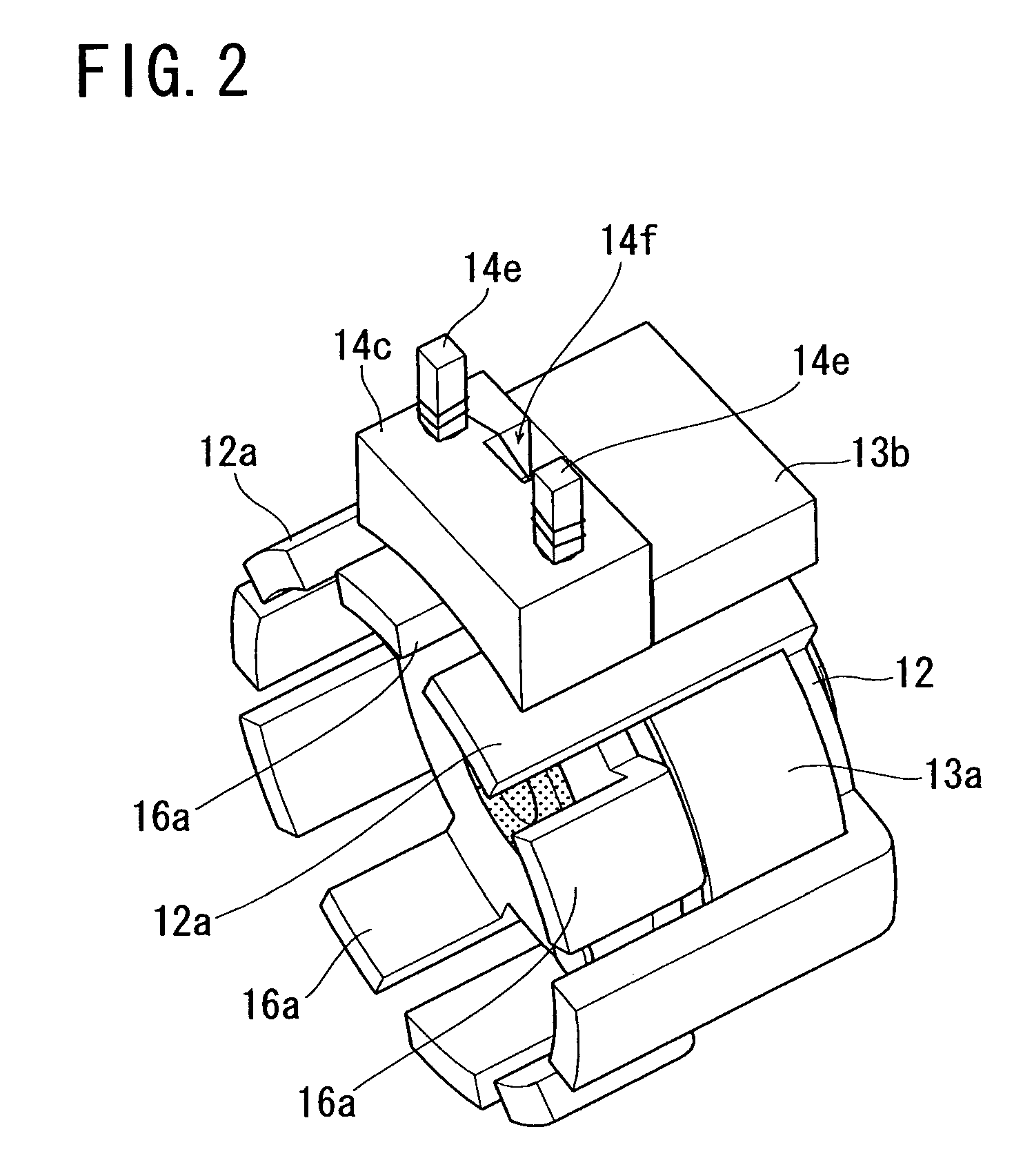Claw-pole type stepping motor
a claw-pole type, stepping motor technology, applied in the direction of instruments, horology, magnetic circuit shape/form/construction, etc., can solve the problems of inevitably pushing up production costs, significant deterioration in motor characteristics, and difficulty in claw-pole type stepping motors, so as to maintain mechanical strength and reduce radial dimensions
- Summary
- Abstract
- Description
- Claims
- Application Information
AI Technical Summary
Benefits of technology
Problems solved by technology
Method used
Image
Examples
Embodiment Construction
[0023]An embodiment of the present invention will hereinafter be described with reference to the accompanying drawings.
[0024]A stepping motor according to the present invention comprises two stator units, specifically an A-phase stator unit and a B-phase stator unit arranged coaxially to each other. The B-phase stator unit is shown in FIG. 1 in an exploded manner so as to explain its constituent parts. The A-phase stator unit uses common constituent parts to the B-phase stator unit and an explanation thereof will be omitted. Since the A-phase and B-phase stator units use common constituent parts, the production cost of the parts can be reduced.
[0025]Referring to FIG. 1, the B-phase stator includes a bearing 11, a first stator yoke 12, a cover ring 13, a bobbin 14, a core 15, and a second stator yoke 16.
[0026]The bearing 11 is, for example, a sintered sleeve bearing to rotatably support a rotary shaft of a rotor assembly to be described later.
[0027]The first and second stator yokes 1...
PUM
 Login to View More
Login to View More Abstract
Description
Claims
Application Information
 Login to View More
Login to View More - R&D
- Intellectual Property
- Life Sciences
- Materials
- Tech Scout
- Unparalleled Data Quality
- Higher Quality Content
- 60% Fewer Hallucinations
Browse by: Latest US Patents, China's latest patents, Technical Efficacy Thesaurus, Application Domain, Technology Topic, Popular Technical Reports.
© 2025 PatSnap. All rights reserved.Legal|Privacy policy|Modern Slavery Act Transparency Statement|Sitemap|About US| Contact US: help@patsnap.com



